The exotic mulberry tree feels more and more at home in our gardens. Find out everything about planting, caring for and harvesting the mulberry here.
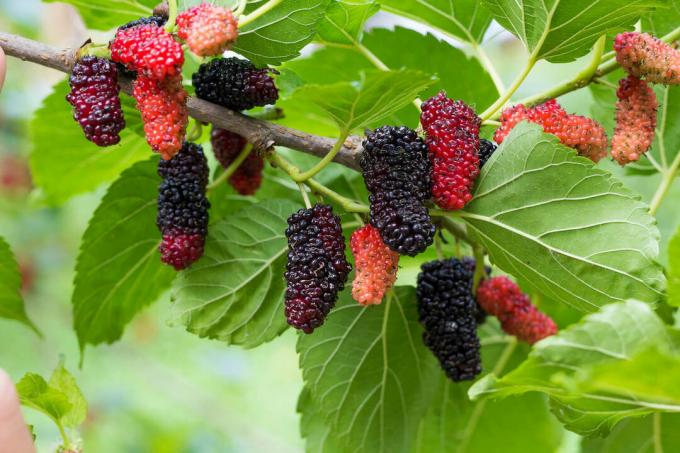
The mulberry tree is still a seldom seen fellow in our gardens. The fertile small tree produces tons of sweet fruits and is also an eye-catcher. We present the mulberry in a portrait and give tips on cultivation and use.
contents
- Mulberry tree: origin and characteristics
- Planting mulberries: location, timing and procedure
- Care of the mulberry tree: cutting, fertilizing and Co.
- Common pests on the mulberry tree
- Is the mulberry tree hardy?
- Propagate the mulberry tree
- Harvest and use mulberries
Mulberry tree: origin and characteristics
The genus of mulberries (More) consists of many different species that are mainly at home in East Asia and Persia. They belong just like them Cowardly (Ficus carica) and the jackfruit tree (Artocarpus heterophyllus), to the mulberry family (Moraceae). Mulberry trees have been grown in China for over 4000 years. The fertile fruit tree is also mentioned in the New Testament. The white mulberry tree (
More alba) was brought to the Mediterranean region around 550 AD and cultivated there. The white mulberry reached Central Europe around 1700. Not because of their sweet fruits, but as food for the silkworm (Bombyx mori) and thus planted for silk production. In northern Germany in particular, older mulberry trees can therefore also be found in the landscape. Next to More alba there are numerous others Mulberry species and varieties, which we would like to present to you separately in our variety article.Mulberry trees grow as medium-sized trees to a height of around 8 to 10 meters, in exceptional cases up to 15 meters. In old age, the round, sparsely branched tree crown is 4 to 6 meters wide. However, the trees can also grow with multiple stems or bushes. With the exception of the dwarf mulberries, mulberries have a strong growth and increase up to 70 centimeters annually. The whitish milky sap that escapes from injuries and can cause skin irritation is typical of the entire mulberry family. The alternate, broadly egg-shaped leaves of the mulberry are large, mostly lobed or undivided and up to 20 centimeters long. When the mulberry tree is in bloom in May, the light green, rather inconspicuous pendent catkins appear. These are sensitive to the cold and therefore at risk of late frost. The fruits, which are up to 10 centimeters long, ripen from the end of June to August and fall off the trees in great numbers. These are pseudo-berries, actually common nut fruits, some of which are also seedless. Some fruits of the mulberry are similar to blackberries, as they take on a deep purple color when ripe. However, there are also red, pink and creamy white mulberry fruits. They all taste extremely sweet and, depending on the type, also pleasantly spicy and sour.

tip: The flowers of the mulberry trees are mostly bisexual and self-fertilizing. However, there are only purely male or purely female plants that have to be planted together for fruiting. Single-sex male plants are also offered as "fruitless mulberry tree" or "mulberry tree without fruit".
Planting mulberries: location, timing and procedure
Mulberries are warmth-loving plants that prefer a sunny and sheltered location. They are adaptable and thrive optimally on lighter, nutrient-rich and calcareous soils that tend to have a high pH value. Since mulberry trees tolerate drought well, they also grow on poorer sandy soils. Mulberries in individual positions require a generous amount of space in the garden, but they can also be planted closer together as a high hedge. The planting distance is 3 to 4 meters in all directions for single trees, about 1 to 1.5 meters for hedges. The ideal planting time for mulberry trees is in early spring from mid-March. In this way, the young plants are not exposed to threatening winter frost and can grow well over the summer.
When planting mulberries in the garden, do the following:
- Loosen the soil deeply, work in sand in heavy soils and, if necessary, lime.
- Dig a deep planting hole, at least 1.5 times the size of the root ball.
- Put the mulberry tree in it, fill it with soil and compact it slightly.
- Tie single standing mulberries with two stakes and coconut rope against and with the wind direction.
- Form the watering edge and water well regularly for the first summer.
If you want to keep the mulberry tree in the bucket, you should use dwarf mulberries that stay low. The pot should have a volume of at least 20 liters at the beginning and be equipped with good water drainage and a drainage layer. We recommend a nutritious, loose potting soil like ours for the mulberry Plantura organic universal soil. Instead of climate-damaging degraded peat, the high compost content reliably stores moisture and releases it to the plant roots when required.
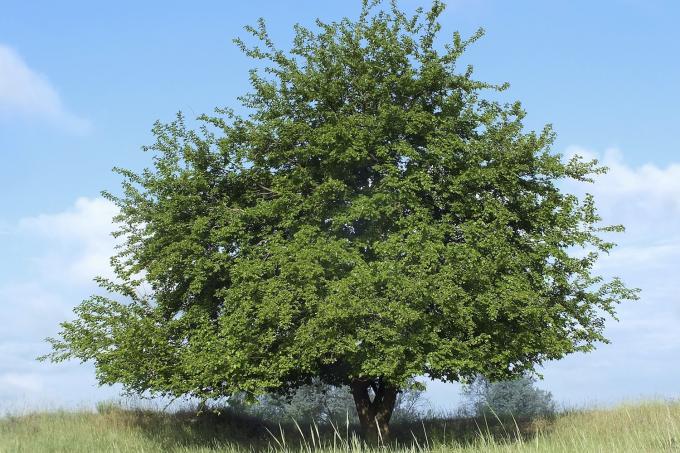
Care of the mulberry tree: cutting, fertilizing and Co.
Mulberries, especially the black mulberry (More nigra), are easy to cut and can therefore be grown as a hedge or as a topiary and kept small. When pruning mulberries heavily, however, one should keep in mind that the plant will produce significantly less fruit in the next year. Mulberry hedges grow so bushy and have a lot of leaves, but less fruit.
Mulberries are generally fruit trees that are easy to care for and also tolerate longer periods of drought. The prerequisite for this is of course a good root system. For this reason, watering should be done regularly in the first few months after planting or when cultivating in pots, especially in summer. If the mulberry tree has grown well, there is hardly any more watering. Fertilization is particularly important in the case of heavily fruiting trees and in pot cultures with limited nutrient supply. Mulberries have a medium nutrient requirement and should be added to a slow release fertilizer such as ours for the first time at the beginning of the growing season in April Plantura organic universal fertilizer, are supplied. The granulate is worked into the surface around the plant and the nutrients are slowly released by the soil organisms. In June there is re-fertilization, which supplies the mulberry with essential nutrients - such as nitrogen, phosphorus and potassium - for the rest of the year.
Common pests on the mulberry tree
In general, mulberries are robust plants that are rarely affected by disease.
Occasionally the mulberry crab (Gibberella baccata) Tie off branches and cause them to die.
Black, rectangular spots on the leaves are formed by an infestation with the bacterium Pseudomonas mori. The leaves of the mulberry tree serve as food for the caterpillars of the silk moth, but the voracious producers of silk are not at home here. But our resident caterpillars and snails also love the taste of fresh mulberry leaves.
In the first two to three years, young plants should be protected from deforestation with glue rings and snail protection.
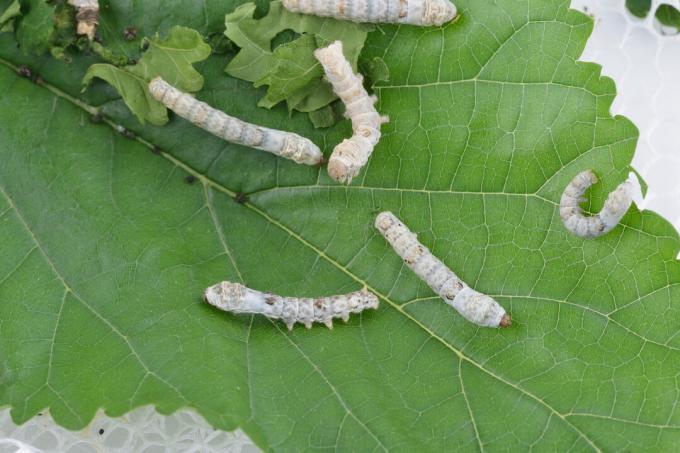
Is the mulberry tree hardy?
Outside of wine-growing areas, mulberries are somewhat sensitive to frost and cold when they are young. The black mulberry in particular, which needs warmth, should receive good winter protection every year or, as a young potted plant, be overwintered in a cool, light and frost-free winter quarters. Older mulberry trees are usually completely hardy to -15 ° C. If young branches freeze off at extremely low temperatures, the strong growth of the mulberry quickly compensates for the loss.
Propagate the mulberry tree
Mulberries can be grown from seeds or cultivated using cuttings.
Mulberry seeds are sown in the spring on a warm window sill. To do this, mix a low-nutrient Potting soil a quarter with sand and fill a suitable sowing container. Mulberries are dark germs, the seeds should be covered with about 2 cm of soil and kept well moist at about 20 ° C. The first seedlings will appear after two to four weeks. Once the young mulberries have grown and the first true pair of leaves appears, the plants should move to a more nutrient-rich substrate. The self-grown, cold-sensitive mulberry trees should not be planted out until the next year. The young plants spend the winter in the house on a light window sill.
In summer, cuttings or cuttings are cut from the young, still green shoots of the mulberry tree with a sharp knife. These should be 10 to 20 cm long for successful propagation. First of all, all leaves are removed except for the top pair of leaves. Mulberry cuttings can be rooted in a glass of water or placed in a nutrient-poor substrate, half of which has been improved with sand. The cuttings should be placed in a light place at 15 to 20 ° C and kept well moist for the next few weeks. If the cuttings start to form fresh leaves, you can transfer them to pots of potting soil.
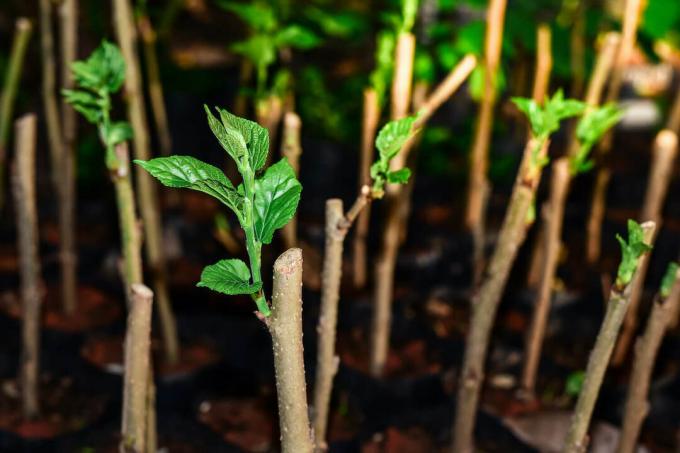
Harvest and use mulberries
Mulberry trees provide edible fruit and have been cultivated in the warm areas of the Mediterranean and Asia for hundreds of years. the The mulberry harvest season begins at the end of June and lasts until the end of August, as the elongated aggregate fruits ripen one after the other. Shortly before the first mulberries begin to harvest, you should stretch a fine-meshed net under the trees, as fully ripe fruits simply fall off the tree. They can then only be kept for a short time and should be used quickly or eaten fresh. Incidentally, the seeds contained can be eaten without hesitation. The white mulberries taste sweet and rather bland on one side, the taste of dark mulberries is usually much more aromatic, sweet and sour, juicy and blackberry-like. The exotic fruits can be preserved in the form of mulberry syrup, jam, mulberry juice or fruit wine. Gently dried mulberries can be stored for months. In addition to fructose, the healthy mulberries also contain antioxidant colorings, provitamin A, vitamin C and numerous minerals.
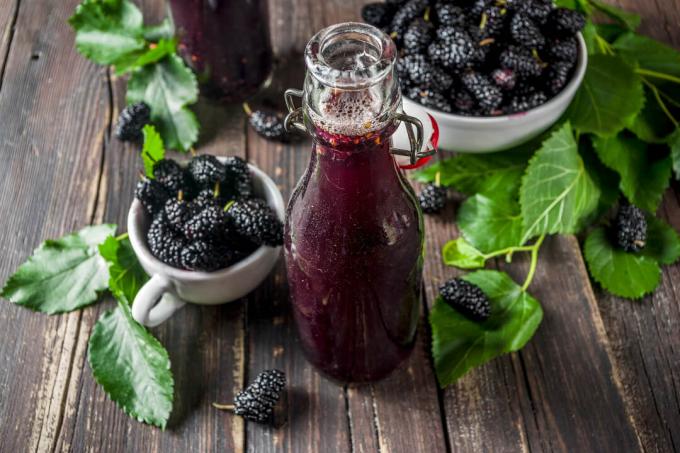
Exotic fruits are trendy and many can also be grown in our gardens. We provide you unusual fruits that you may never have heard of.
